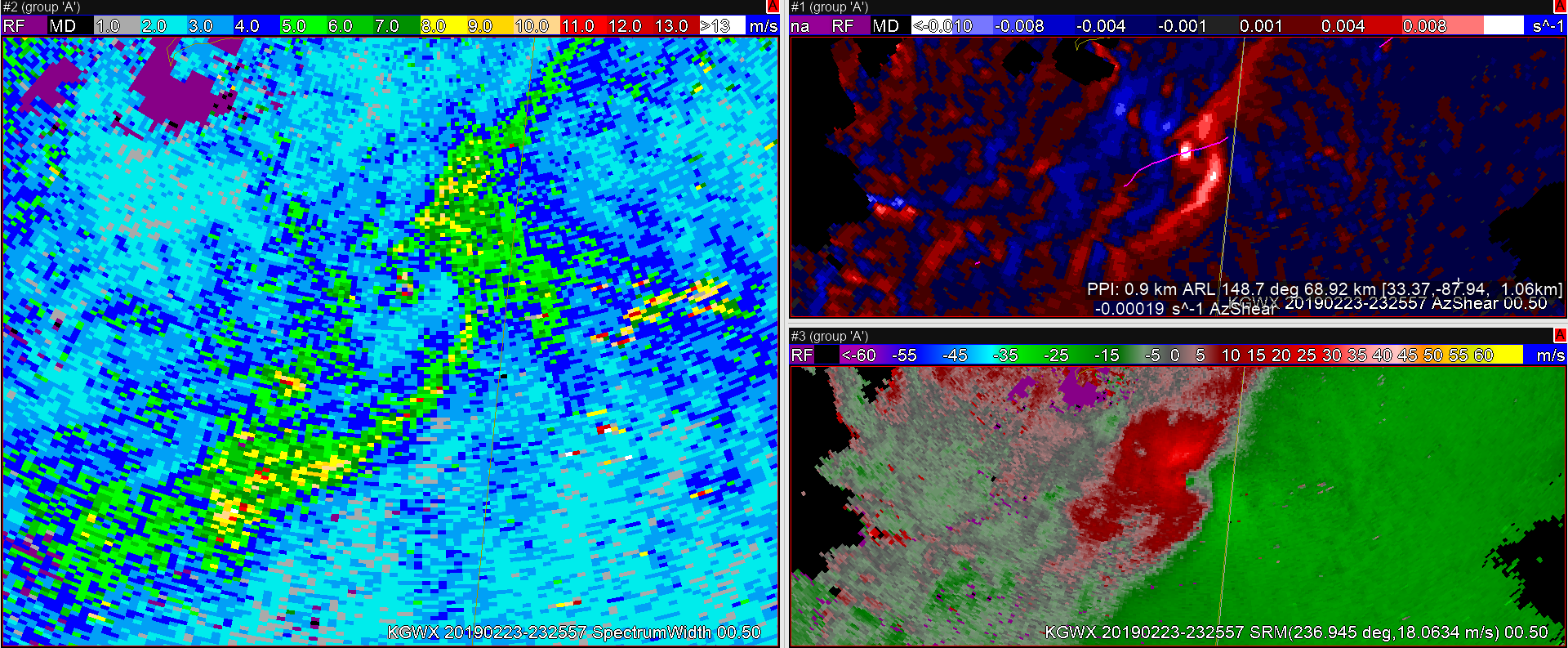Analyzing the tornadic signatures on the KMXX RDA. This storm is quite obviously already tornadic with an apparent hook echo on reflectivity as well as very strong gate to gate velocity couplets through multiple levels. If I were to use AzShear in conjunction with the plethora of other available tools I would want the product to help me identify areas that are not as well developed as others.
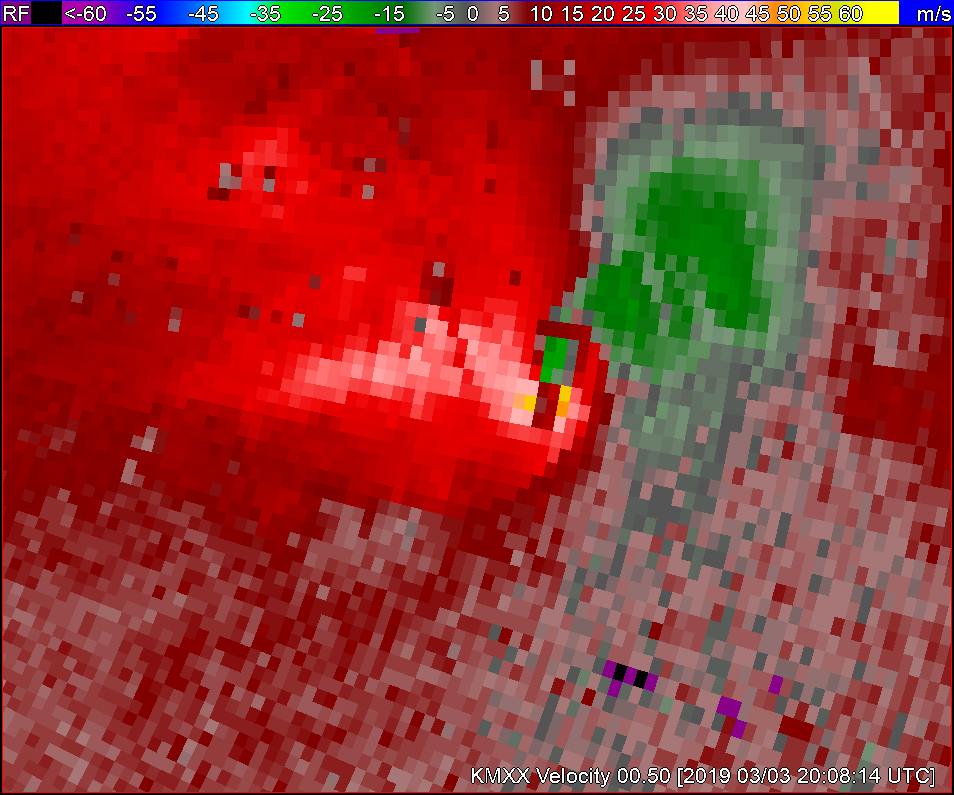
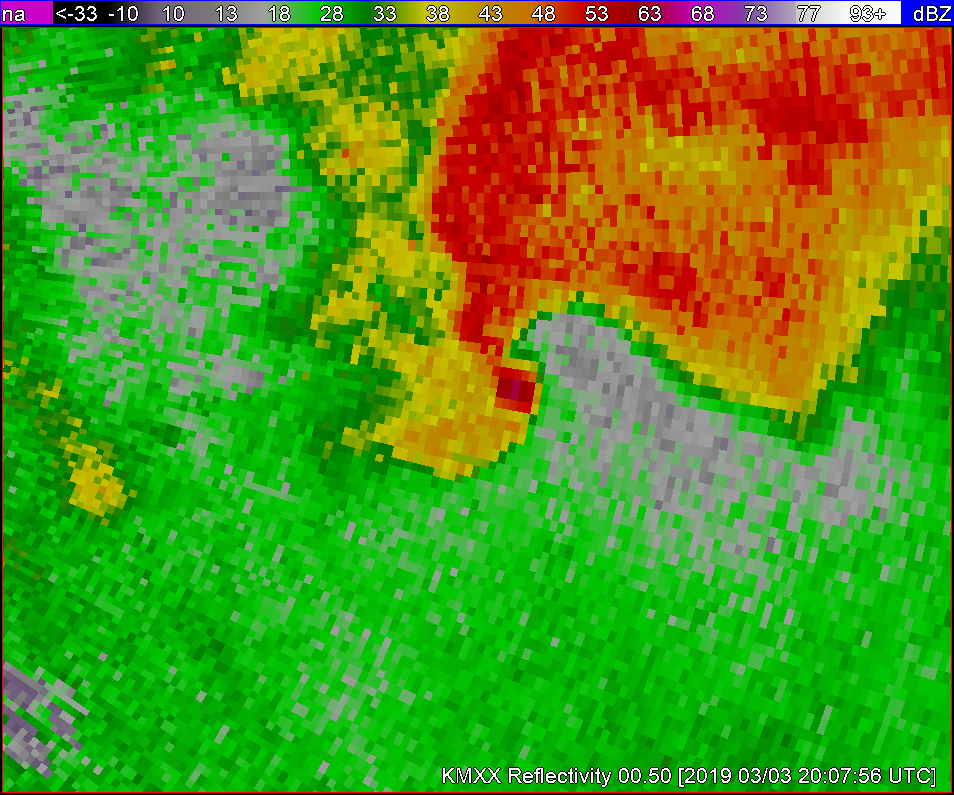
In a case like this I’m not sure how much AzShear would help me forecast what is an obvious tornado. But as I am usually responsible for a very large area to METWATCH I decided to switch to the KEOX radar and zoom out to see if AzShear would help to identify areas that aren’t such a ‘slam-dunk’.

This storm to the NE of the RDA doesnt appear to be anything more than a lower threat general thunderstorm on first glance, especially when compared to other storms in the area.
Velocity doesn’t show anything too crazy either.

BUT when I look at KEOX AzShear there seems to be an area of shear that may lead to something…Lets see…

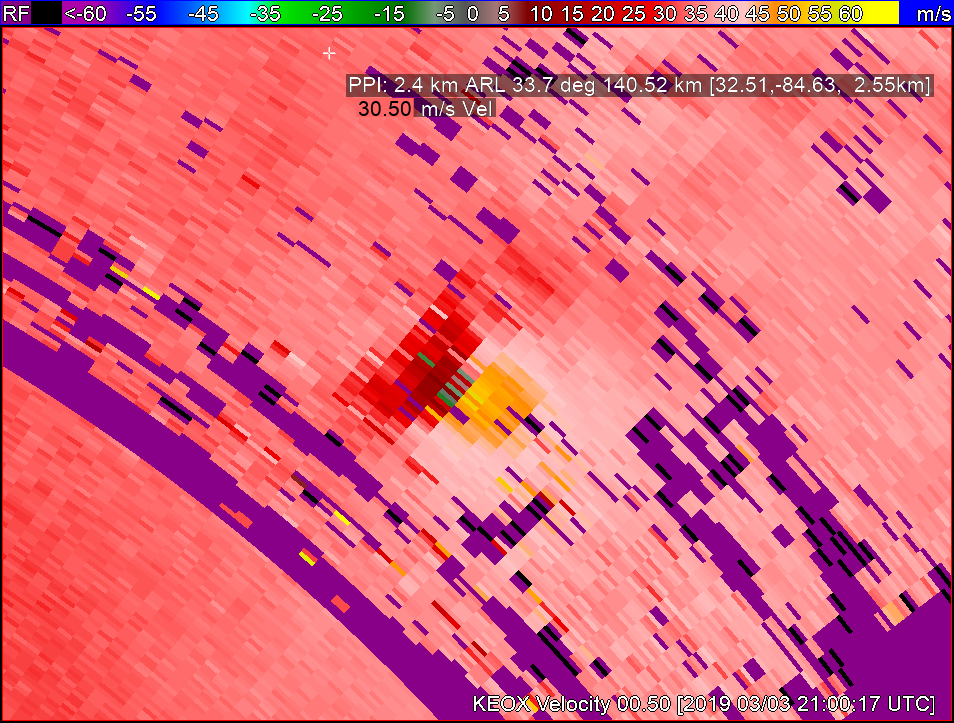
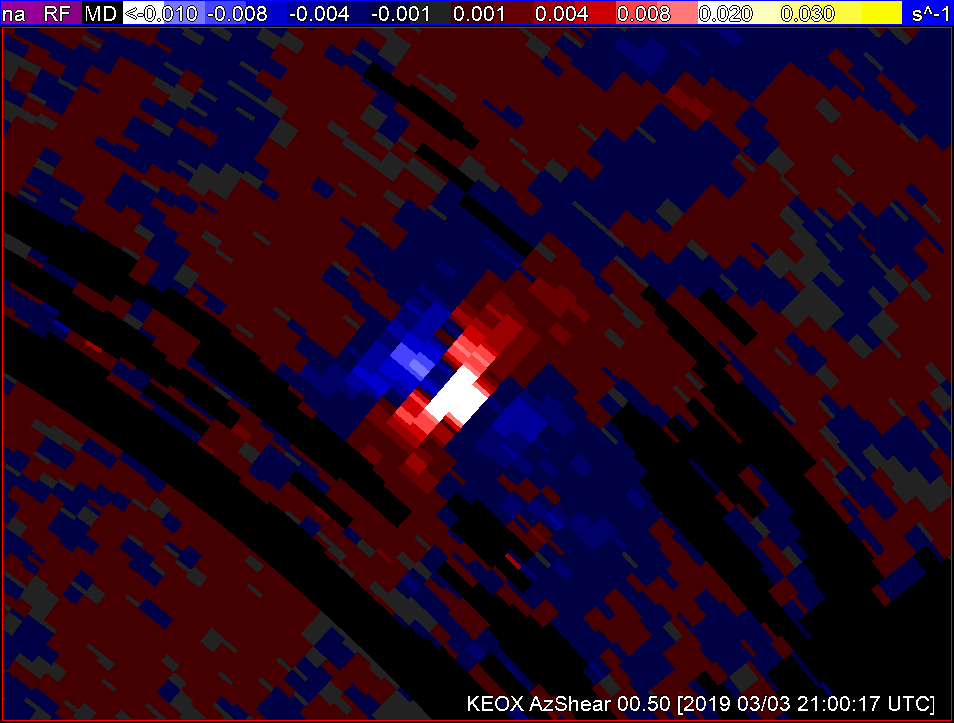
Following the same storm for 40 minutes I noticed the following: The storm developed into a possibly severe thunderstorm with reflectivity dBzs in the low to mid 60s, significant velocity couplets as well as continued higher AzShear.
For the purposes of how I am required to warn customers, generally 1.5hr required lead time icelyfor a hit within 5nm, this 40 min advanced notice of a storm that has increased severity significantly would be invaluable when added to my stable of available tools to use.
***Desmond***


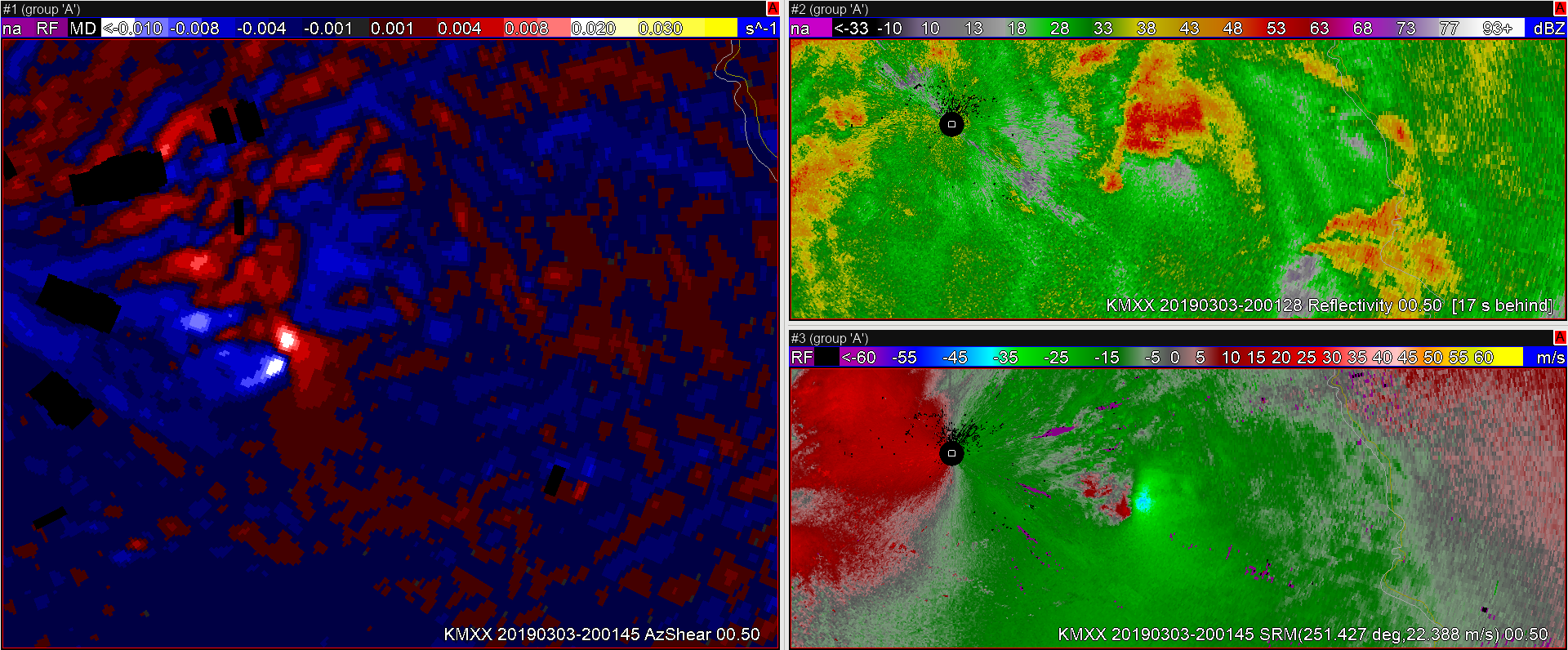



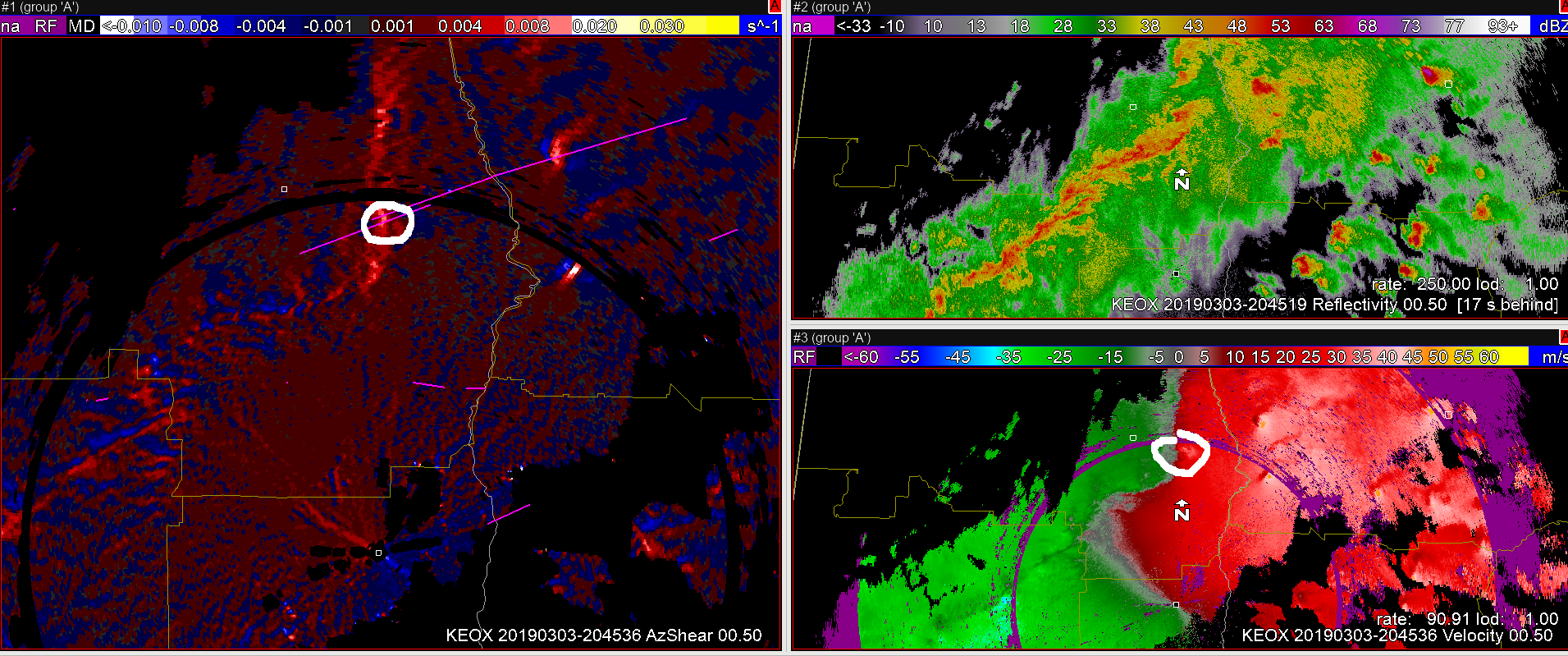
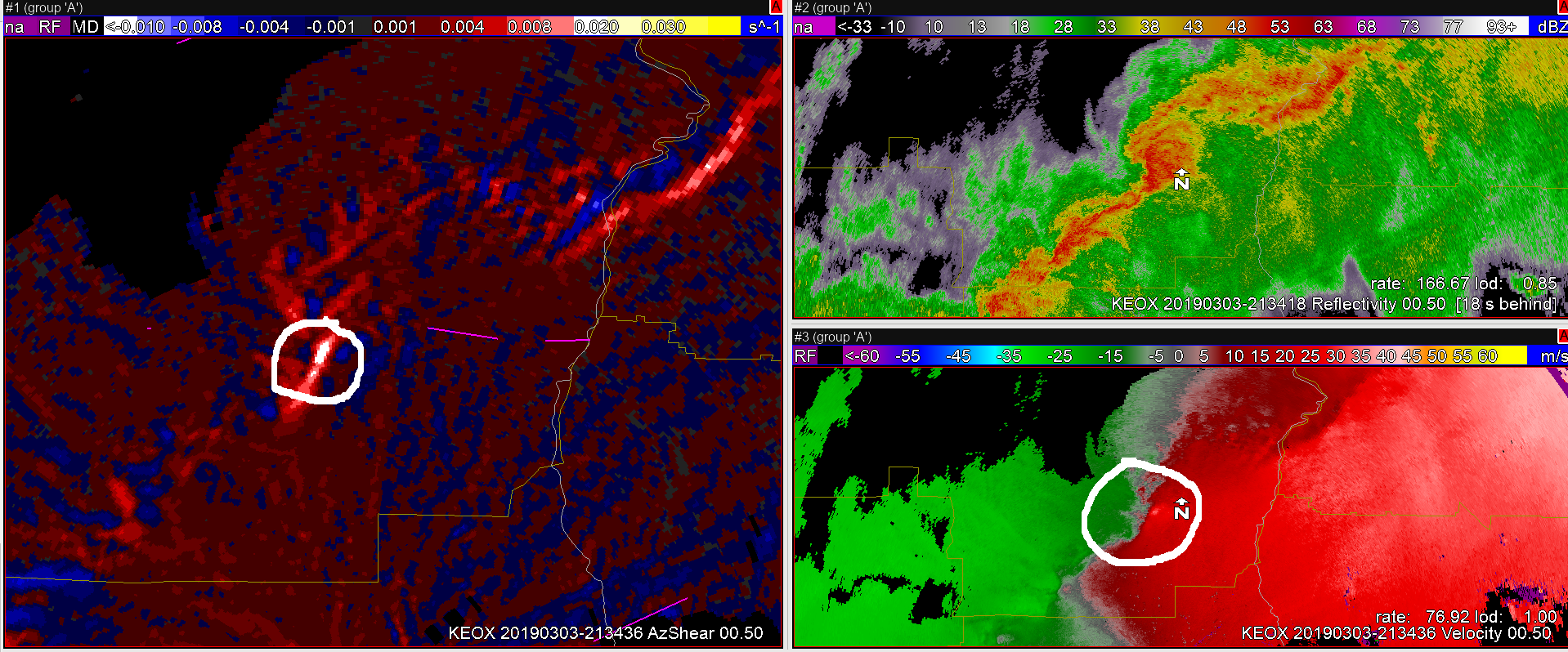
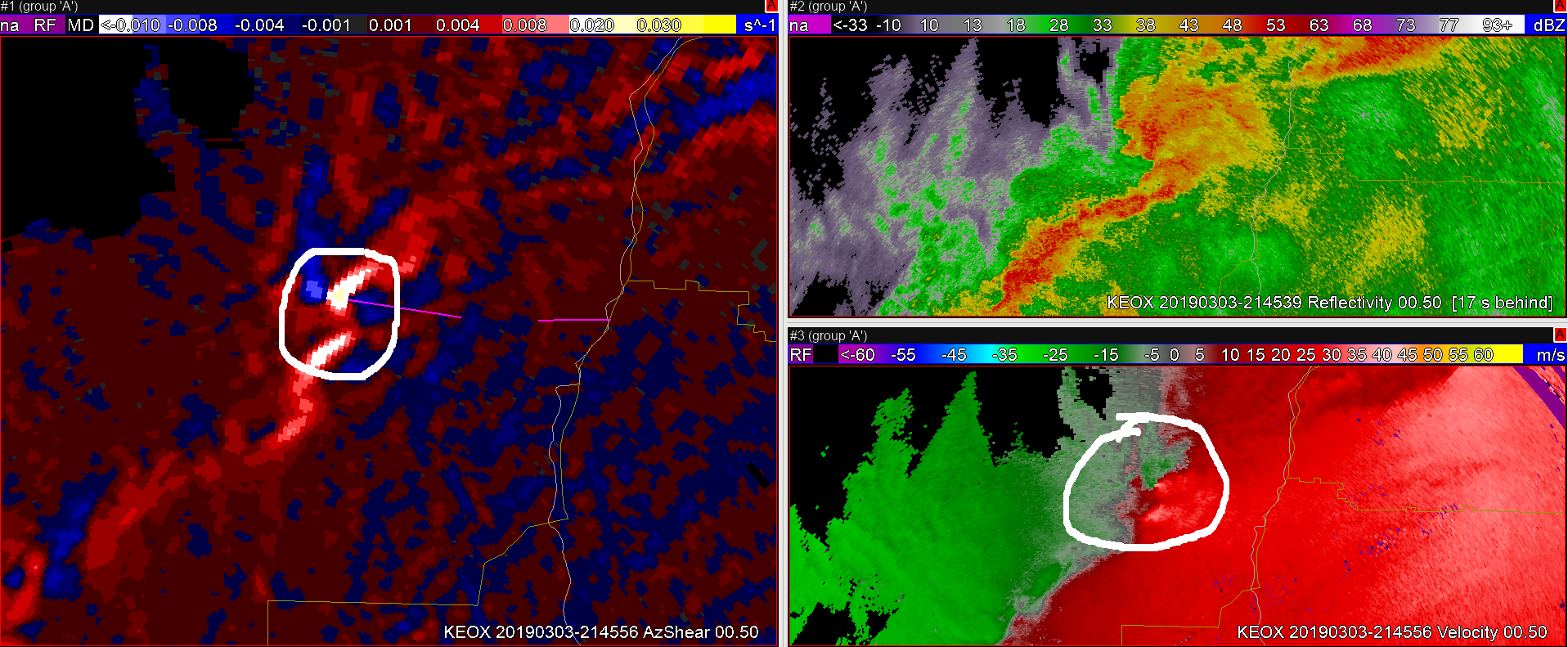
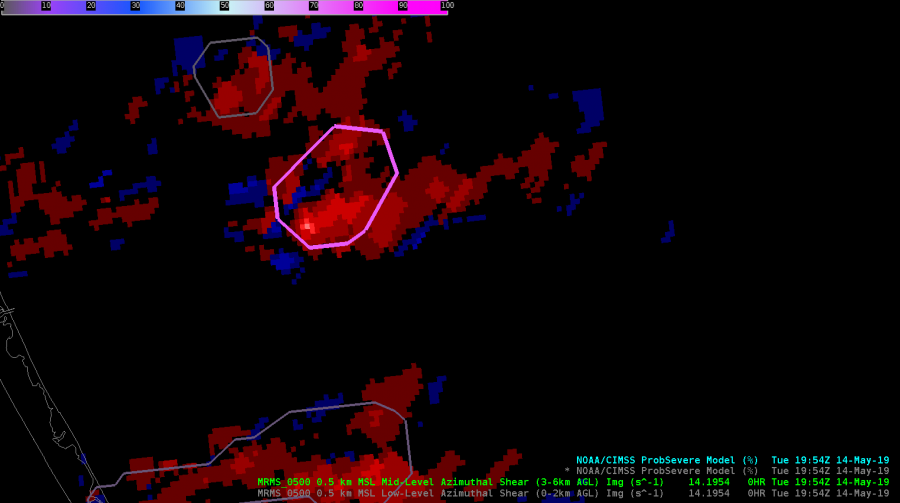
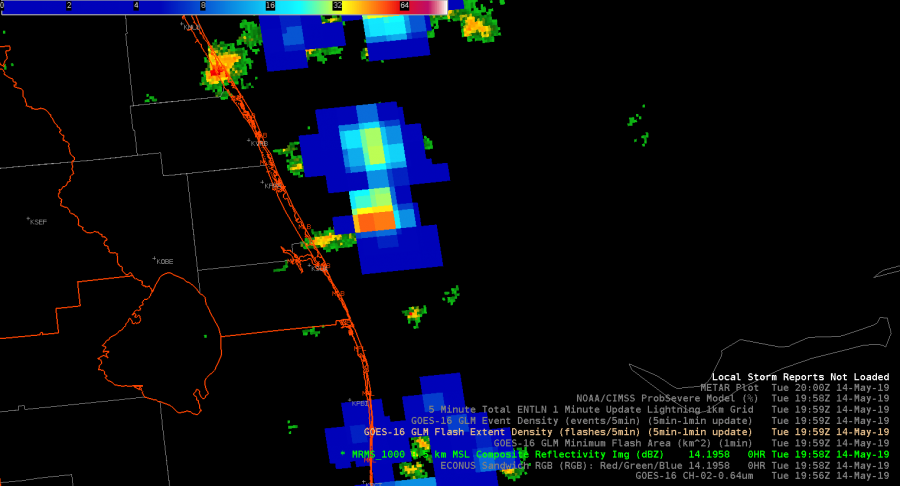
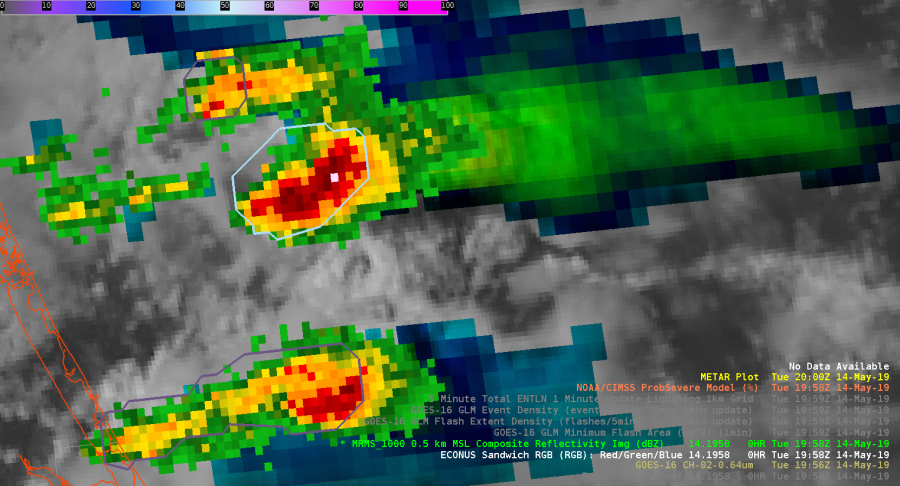
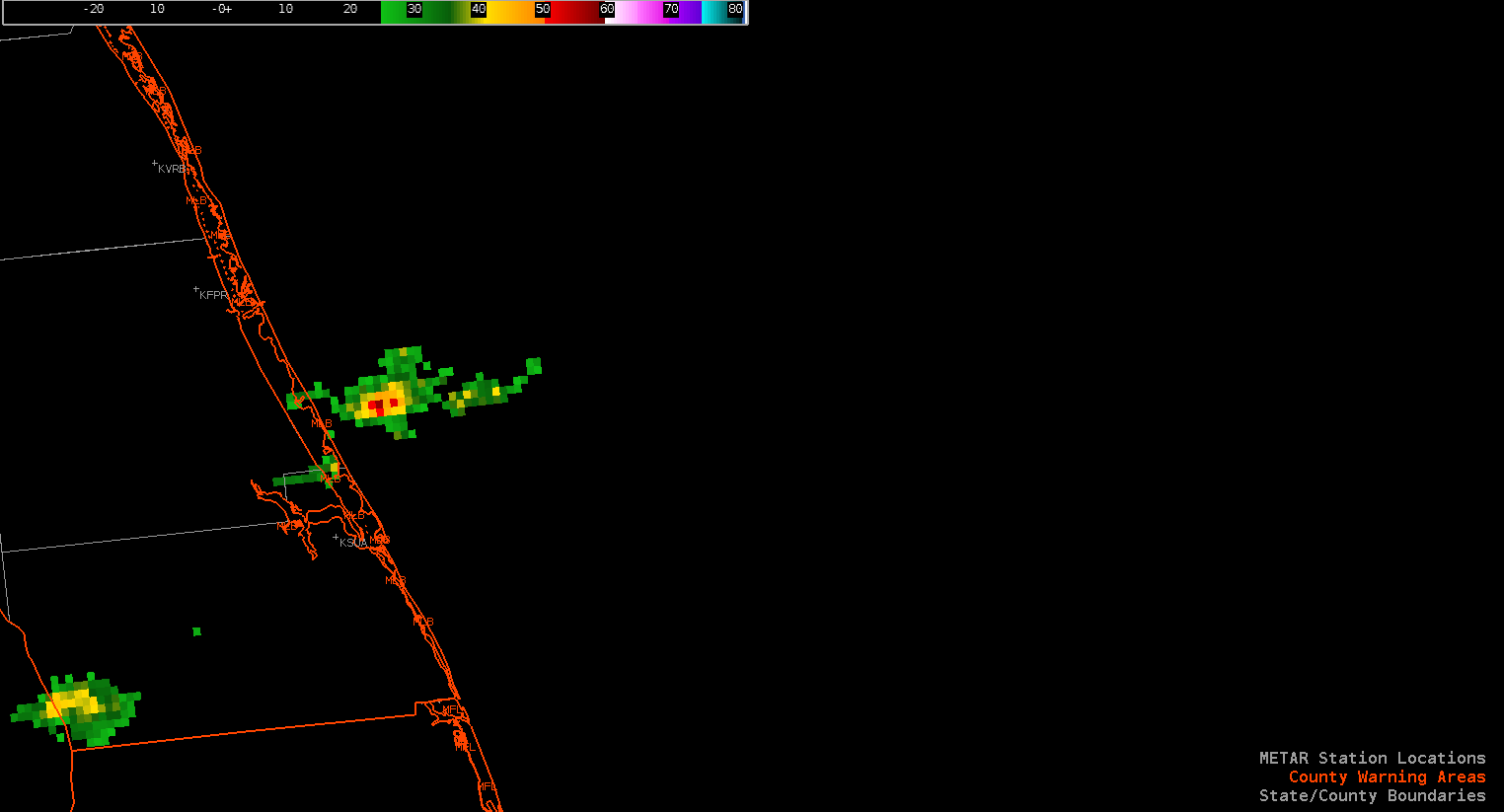





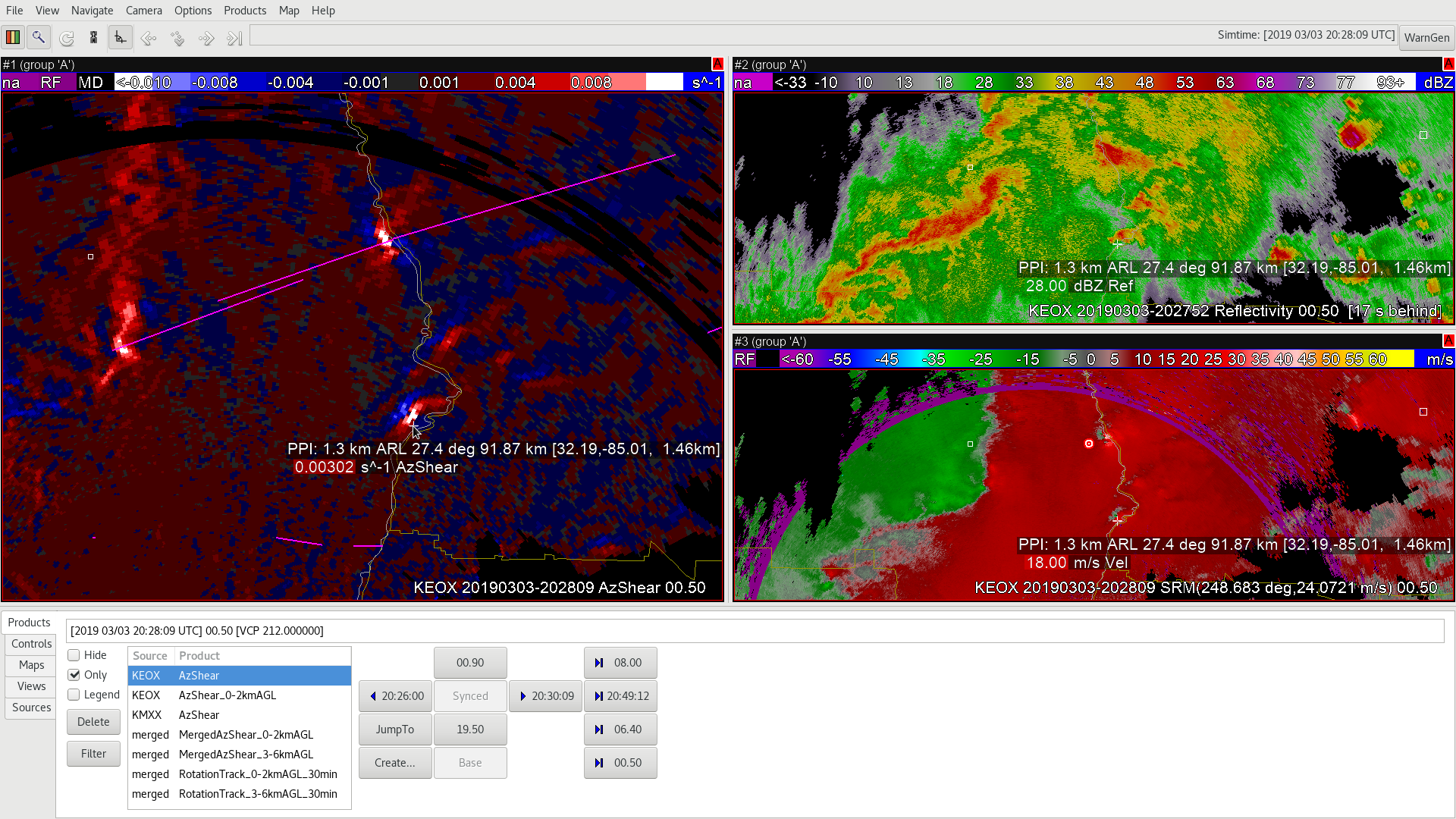
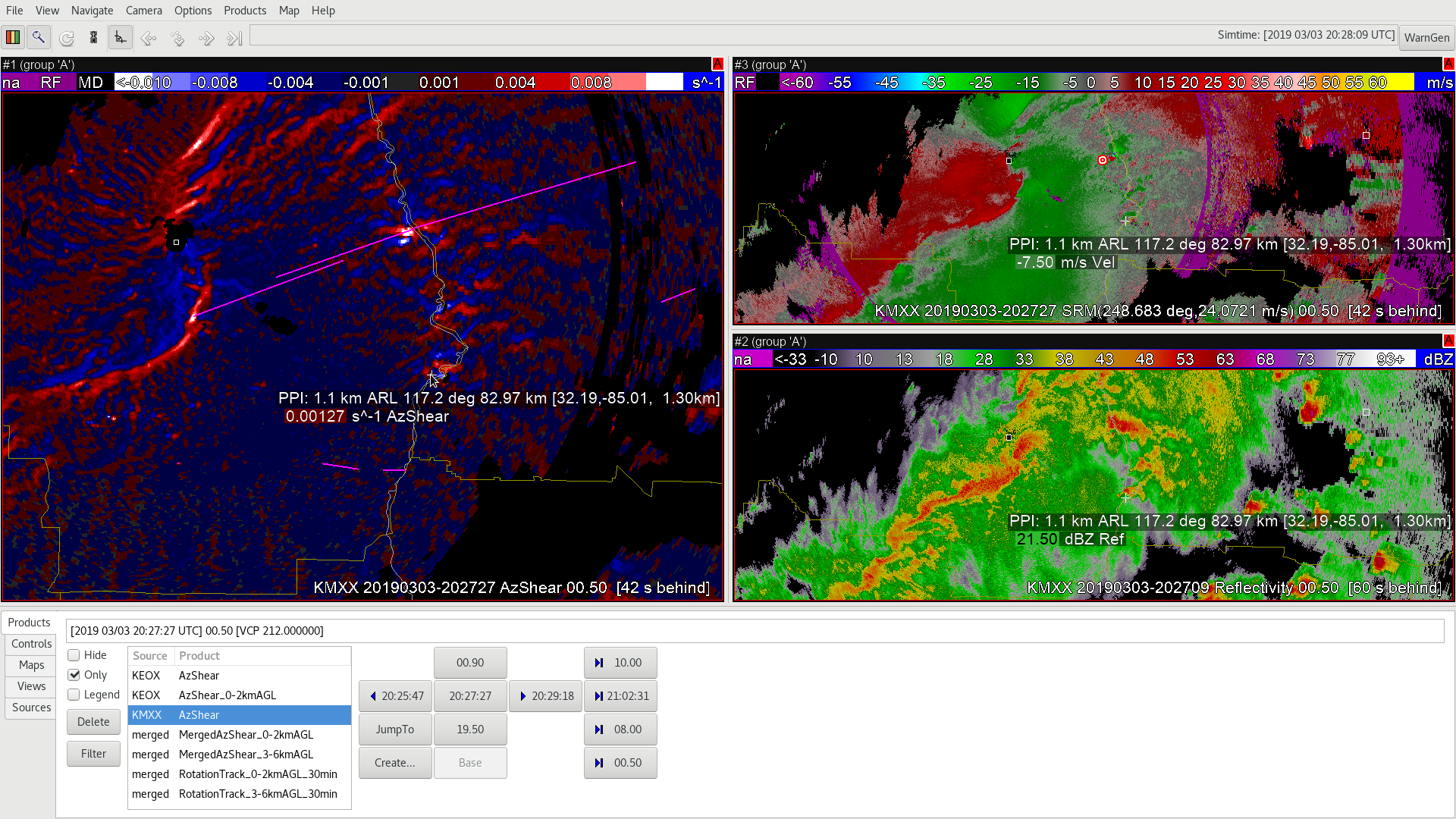
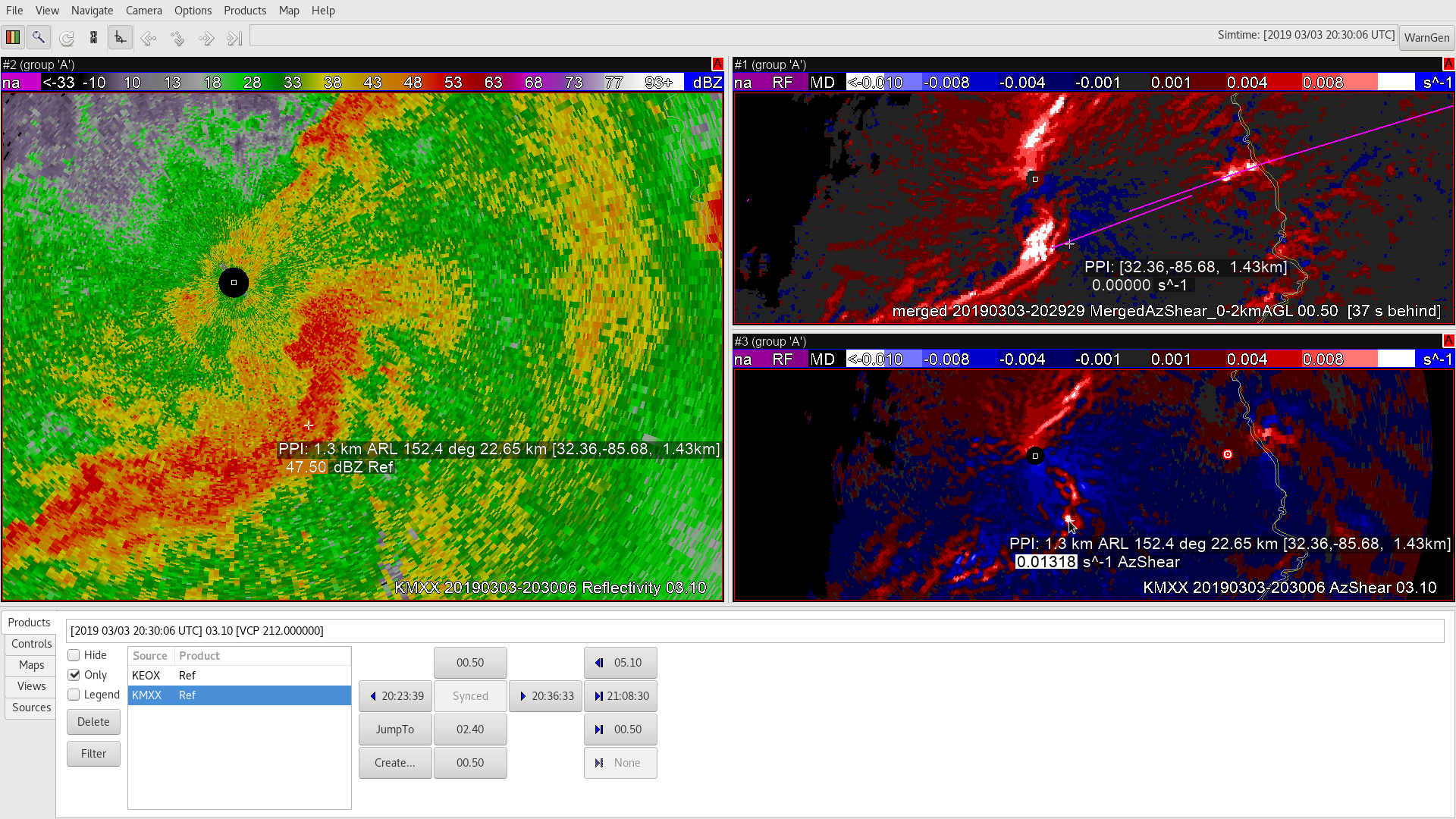
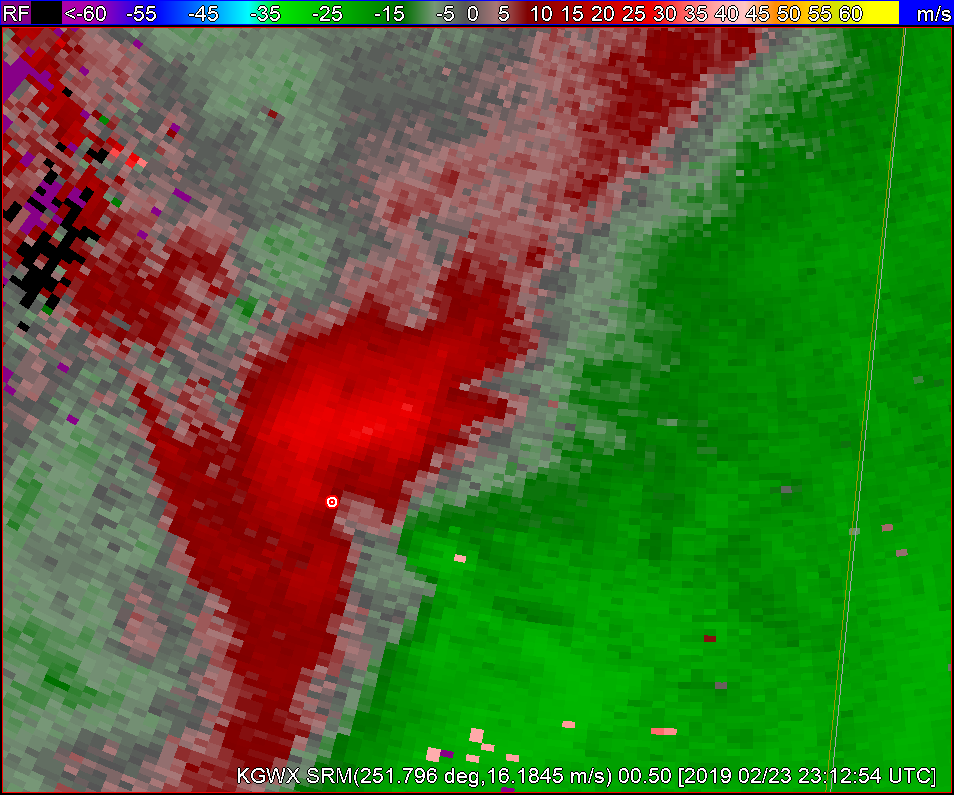

 Above is an example of those three products with my mouse over the circulation center for reference. In particular, I grabbed the 0.9deg radar tilt to get the middle of the averaged layer (~1km AGL). Because of this multi-maximum issue in the merged product, I find the main AzShear product more useful and trustworthy than the merged product with this particular case.
Above is an example of those three products with my mouse over the circulation center for reference. In particular, I grabbed the 0.9deg radar tilt to get the middle of the averaged layer (~1km AGL). Because of this multi-maximum issue in the merged product, I find the main AzShear product more useful and trustworthy than the merged product with this particular case.


